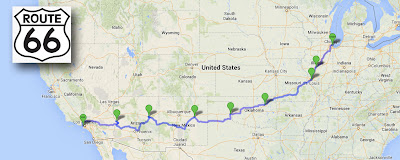 |
| © Simon Poulter 2013 |
It is notable that Frank Sinatra never waxed about Norwich, and Tony Bennett is yet to bemoan leaving a love behind in Frankfurt.
Only American place names seem to fit effortlessly into songs: New York, San Francisco, LA and, of course, Chicago - on a certain level, just collections of bricks and steel, and people and cars hurriedly going about their business. But mentioned in song they take on romance, excitement and melodrama, and often all three.
The rest of the world? Moscow? Berlin? Even the classical cities of Paris, Rome or Madrid, don't cut it (and I'm not going to count Barcelona - one camp, overblown production by Freddie Mercury and Montserrat Caballe does not make a city classic).
Only in America can everyday mundanities be made to be interesting. Springsteen can make the "screen door slammin'" sound like poetry, whereas - with the exception of Ray Davies, Paul Weller and, more recently, Richard Hawley and Jake Bugg - few British songwriters can make ordinary sound cool.
Write a song mentioning Birmingham, Alabama, and you'll find yourself as cool as Birmingham, Alabama, is steaming hot. Write a song about Birmingham in the West Midlands of England, and you'll disappear from trace.
In blues music, in particular, place names are as much a staple as tales of woe, mostly involving women, and invariably involving travel to be either reunited with or escape from a lover. You could probably draw a map of the United States just on cities mentioned in the American Songbook, from Robert Johnson's original Sweet Home Chicago to Chuck Berry's Johnny B. Goode (New Orleans, in case you were wondering) and all points in between - Memphis (which holds the distinction for being mentioned in more songs than any other city), San Antonio, Tulsa, Detroit, Phoenix, Albuquerque, El Paso, Jackson, La Grange, Reno, Santa Fe, Tucson...
Even American roads - just strips of tarmac when you think about them - hold an intrinsic cool that their foreign cousins cannot match. It would be exceedingly brave of a musician to try and make driving the A30 down to Cornwall sound exotic; but drive Route 66 from Chicago to LA - as I'm about to do - and you're already following the advice of Bobby Troup's 1946 song, famously covered by Nat King Cole, the Rolling Stones and Chuck Berry. Cool, cool, cool.
 |
| © ChooseChicago |
Perhaps due to its location - which gets whipped by icy blasts coming off the lake during winter - you expect Chicago, like its near-neighbour Detroit, to be a gritty, non-nonsene northern industrial city. Nothing could be further from the truth. Certainly, in their heritage, Chicagoans have escaped from hardship, and not always found relief, either, but there is a restrained friendliness about the city. This is not New York - a city I love, by the way, but whose self-absorption can sometimes grate - but a city getting on with what it has to do.
 |
| © Simon Poulter 2013 |
Unsurprisingly, Chicago has a very European feel, more so than any other American city I've visited with a strong link to the Old World. The city is also an architectural delight, partly the result of the devastating fire in 1871 that required much of the city to be rebuilt. Chicago led the nation in building the first skyscrapers and today features the Willis Tower (formerly the Sears Tower), once the world's tallest at 1,451 feet and today still the highest in the Western Hemishphere. On a clear day you can see far into Illinois, Indiana, Wisconsin and Michigan, and the lofty of the flat greater Chicago area itself is breathtaking (top tip - buy yourself a $40 CityPass. It'll save you the pain of queuing for more than two hours to get to the top by buying you 'fast track' access to the he'd of the line).
 |
| © Simon Poulter 2013 |
 |
| © Simon Poulter 2013 |
Those seeking musical respite, of course, will be richly rewarded. Chicago IS bluestown, and visitors have plenty to choose from authentic blues venues like Kingston Mines, Muddy Waters' Checkerboard Lounge, Buddy Guy's Legends and Blue Chicago.
 |
| © The Second City |
So that's the tourist stuff dealt with. To be honest, that's not what brought me here (well, apart from live blues music, that is). Chicago is the start of the 'Mother Road', Route 66. Today it exists more in name and mythology than actual physical roadway (it was decommissioned as 'US Route 66' as the interstate highway system superseded it).
As it did in 1926 - established on November 11 (my birthday!) - I will over the coming week or so follow it from Chicago to California, driving as much of what is left of the original 2,448-mile route - now relative backroads compared to the interstates - south through Illinois, Missouri, a bit of Oklahoma, Texas, New Mexico and Arizona before coming to a halt on Santa Monica Pier.
21 years after my first visit to the US, and many, many visits since to LA, New York, San Francisco, Miami and others, I've got the keys to America's highway. Better get a move on.

No comments:
Post a Comment